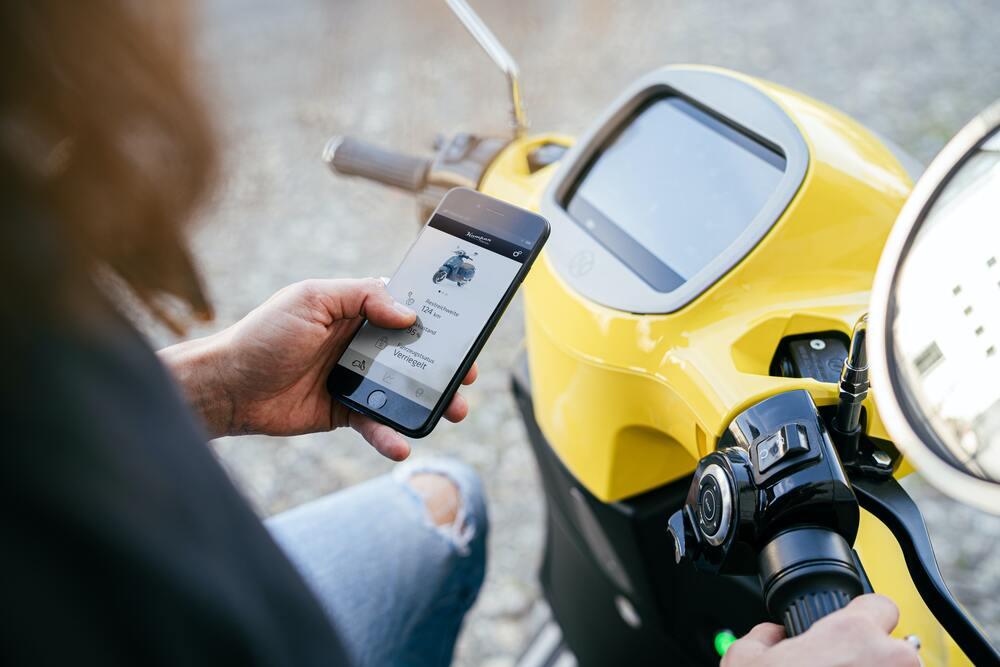When we think of vehicles and transportation, the first thing to come to mind are cars, buses, trams, trains and the like. More recently, however, there has been a new addition to the market—micromobility.
What is micromobility?
Micromobility refers to small, lightweight modes of transportation—usually single-occupant—such as e-scooters, e-bikes, e-mopeds, and e-skateboards. They can be human-powered, electrically assisted or electrically powered.
What makes micromobility vehicles so appealing is their practicality. They are the fastest way to get around congested cities and can be parked just about anywhere. Because they are lightweight you can even carry them with you if needed. E-scooters, for example, can be folded up in just seconds and don’t take up much storage space at home.
What’s not to love?
Now you may be wondering—lightweight, practical, one passenger? Sounds like a normal scooter or bike to me. What’s the big deal? Of course, these features are not what make micromobility devices so popular. It’s IoT—or internet of things. To be more precise, micromobility vehicles can be connected to cellular IoT. What this means is that by utilizing IoT, micromobility vehicles can be connected to apps—think mobile phones—and send and receive useful data such as speed, location, ride history, payments, and all sorts of useful information.
There’s just one catch. In order for these micromobility devices to work seamlessly, testing these devices is essential. Without micromobility testing, micromobility providers would face a lot of challenges and severe rebuke from users. For instance, things like data delay, bad connectivity, low compatibility across devices, and poor error handling can all discourage users from using a specific micromobility device.
What does micromobility testing entail?

Testing micromobility devices means delving into the device at hand, be it an e-scooter, e-bike, or something else. This typically involves a generous amount of testing—both the micromobility device and application:
- Bluetooth Low Energy (BLE) connectivity testing. Checking IoT module connection with other devices such as mobile phones, sensors, wireless devices.
- Battery testing. Looking at the status of the device battery under various conditions.
- Sensor testing. Ensuring different sensors—such as speed, cadence, DI2—work accurately.
- Mobile application testing. Making sure the mobile application meets the requirements.
- Network testing. Seeing whether the device works under various network conditions.
- Location testing. Checking if the application precisely detects the location of the device.
- Front-end testing. Validating if GUI and UI elements are functioning as expected.
- Backend testing. Checking database defects like data loss and data corruption.
- E2E testing. Looking at application workflow from beginning to the end.
- Usability testing. Checking how user-friendly the application is.
- Hardware testing. Ensuring the functionality of hardware components works properly.
- LED behavior testing. Verifying that LED lights and buttons work as they are supposed to without any issues.
- Third-party software testing. Comparing data accuracy via third party software applications.
- Error handling testing. Seeing whether the system is capable of handling errors so the user is informed about the cause of the error.
- Data calculation testing. Observing how accurately data is collected and processed after different rides under various conditions.
- Synchronization testing. Checking data synchronization process to the cloud.
- Security testing. Making sure the user is informed and protected from various types of theft.
- Firmware testing. Ensuring the firmware meets specified requirements and update behavior.
- Payment testing. Checking whether credit cards are added securely, calculations are done correctly, and transactions are executed quickly and effectively.
As you can see, there are a lot of different types of testing involved when testing micromobility devices. So what does the micromobility testing process look like in action? Let’s see.
What does the micromobility testing process look like?

One of the greatest misconceptions people have about testing micromobility vehicles is the testing process itself. Namely, many would say that to test an e-scooter or e-bike, for example, you just need to ride it around and see if it actually moves. While field testing is a major part of micromobility testing, it’s not enough to validate various IoT components and software functionalities. Micromobility devices rely on various software and hardware features that, when harmoniously interconnected, allow for these lightweight electric vehicles to work as intended in different conditions. This means that checking the apps that are paired with them and how they work together is just as important.
We spoke with two of our QA engineers, Mārcis Dimants and Edijs Gulbis, who have the fun task of testing micromobility vehicles, specifically e-bikes and e-scooters. Both have ample experience in IoT testing and micromobility is kind of their specialty.
Testing e-bikes
Mārcis is our go-to person for testing e-bikes. He knows the ins and outs of the different types of tests that need to be carried out. Based on his experience, IoT testing is no easy feat. It involves checking a variety of hardware and software components to ensure that they work well together. To simulate the exchange between the IoT device and the mobile application, he uses various communication methods. He also points out that it is important to consider the environment in which the device will be used—network type, signal strength, weather conditions—and verify how it will function under the given conditions.
“Testing e-bikes is 90% field testing and 10% mobile application testing.”
When testing e-bikes out in the open, it’s important for the QA tester to imagine that they are the end-user—the person who will actually be using the product. They need to be the user and think like the user. How would they use the e-bike, where would they travel, what kind of variable conditions could they face?
To successfully test the e-bike, the tester needs to ride the bike and try out different scenarios, combinations, and interruptions. Additionally, when performing battery testing, it’s necessary to see how the battery behaves in different weather conditions—such as hot, cold, sunny, rainy, or snowy weather—and document any odd behavior.

Testing e-scooters
Edijs takes micromobility testing very seriously. So if you see him on an e-scooter, you know he’s not going for a joyride. He is in fact thoroughly and passionately testing all its functionalities. Edijs briefly describes the testing process for e-scooters.
First, he reads through the documentation provided by the client to see how many functionalities need to be tested and how many of these functionalities need to be tested with the hardware. In other words, how many functionalities need to be tested outside while riding the e-scooter. Based on the documentation, the next step is to build a test suite. While the test suite is being built, Edijs does a bit of exploratory testing to get to know the hardware better and understand how it works.
Once the test cases are ready, he can get started on the regression testing which is more or less based on core functionality. He tests each functionality under a specific connection type, by changing mobile devices, network strength, BLE strength, and so on, so at the end he can verify which functionality is working correctly and which functionality needs to be improved.
“During testing you have to think like a user and imagine as many scenarios as possible. Improvisation and creativity is key.”
Field testing is an important aspect when testing all types of micromobility devices. QA testers need to ride around different locations, on different types of roads, and under various conditions, for example:
- Straight roads
- Roads with sharp curves
- Dirt roads
- Busy roads
- Quiet roads
- In the woods
- Under bridges
- In tunnels

Field testing is also the most effective way to test the GPS location and GSM connection between micromobility and IoT devices. This is because satellites can sometimes show incorrect values if there is any kind of obstruction. For instance, when riding under a bridge, the bridge might be blocking the signal to the satellites. This is why extensive field testing is crucial to get more reliable and authentic results.
All testing data and findings are gathered and presented to the client. Our findings include actionable insights that will help clients address defects and improve overall performance.
What are some challenges of testing micromobility devices?
As we said, testing micromobility devices is serious business and nothing short of challenging. While performing hardware and IoT testing on these devices, QA testers encounter various challenges:
- Bad GSM connection. If there isn’t an internet connection or a bad connection, then the IoT device will not send any data to the server nor will the mobile application send data back to the server.
- Location requirement. To get a valid GPS connection, it’s essential to be outside for most part of the testing process.
- Performance issues. The speed of data being received and application reliability under different GSM conditions can cause performance issues like a delay in displaying data.
- Sensor/hardware interactions. A large number of sensor/hardware interactions may complicate testing.
- Blocking BLE signal. It can be difficult to block BLE signals during field testing and may require a lot of aluminum foil.
- Harsh weather. Harsh weather conditions, particularly in winter, make it extremely difficult to test devices because, for example, e-scooters only have front brakes and summer tires.
- Incomplete documentation. Not all functionalities can be included in the documentation which means it’s not always clear how a feature should work during tests.
- IoT module issues. Devices with IoT modules that support both GSM and BLE can cause functional issues when switching from one connection type to another.
- Technical problems. No matter the type of testing, various technical problems can disrupt the testing process, such as a flat tire which may take some time to replace.
Regardless of the obstacles, it’s up to the QA engineers to rise above the challenges and deliver reliable results.

Is micromobility a passing fad or here to stay?
More and more people are open to the idea of micromobility alternatives, ranging from e-scooters and e-bikes, for commuting. In fact, McKinsey carried out a Mobility Ownership Consumer Survey in 2021 which found that 70% of consumers would use a micromobility vehicle for their daily commute. Furthermore, the global micromobility market was valued at USD 40.19 billion in 2020, and is projected to reach USD 195.42 billion by 2030. This positions micromobility as a serious contender in the transportation industry.
There are various factors that are driving the growth of the micromobility market:
- Rising pollution levels.
- Increasing environmental consciousness.
- Growing congestion in urban cities.
- Increasing popularity of smart cities.
In addition, people are opting for micromobility vehicles as their transportation of choice for individual reasons:
- Money. Investing in a micromobility device can save users money that they would otherwise spend on public transport fares and fuel prices.
- Practicality. Some small electric vehicles like e-scooters can be folded in a matter of seconds, allowing you to carry or store them easily.
- Time. Users can get to their destination in a similar time as they would using other transportation, without getting stuck in traffic.
- Speed. Most e-scooters and e-bikes can reach a top speed between 25-50 km/h but this, of course, varies across brands and devices.
- Battery life and range. Micromobility vehicles can usually go around 50 km—sometimes more or less depending on the device—on a single charge. And the best part is they only take a few hours to fully charge.
As we can see, the main reasons for the steady growth of the micromobility market is that it offers a viable solution to the many problems commuters face daily—time, money, and practicality. Therefore, we can certainly agree that micromobility is here to stay. And we’ll surely be seeing more of these lightweight vehicles on our streets.
Be at the forefront of the growing micromobility market
Micromobility testing is not all fun and games. Sure, you can ride these vehicles across town to see how long the battery will last, but that’s just the tip of the iceberg. It actually requires looking at every functionality and feature of the device and requires a great deal of skill. This demands a lot of knowledge and expertise in IoT testing. You have to know what to look for when testing and be able to report and communicate defects to development teams effectively in order for the device to be improved.
To be sure that your micromobility device performs at the top of its game, working with QA experts is a must. With over a decade of experience in the quality assurance field and vast experience testing IoT devices—including hands-on experience testing e-scooters and e-bikes—we can help you check your micromobility device against requirements. With the micromobility market on the rise, you don’t want to be left behind competitors.
Get in touch with us today and let’s discuss your project.




